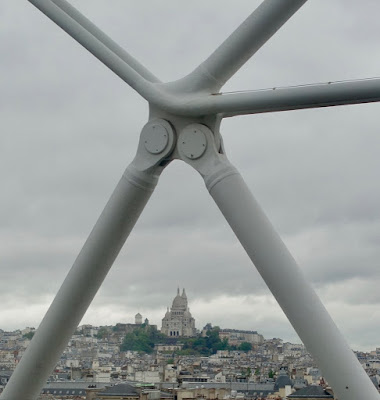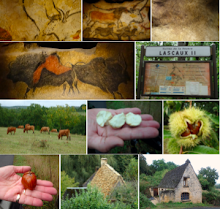Today was really cold, windy and very rainy. Much more fall than spring weather.
Nevertheless, Saint-Denis cathedral in the northern suburb was still worth a visit.
Denis was christian but unluckily beheaded on Montmartre by the Romans around 250 AD. He managed, though, to walk 8 km northwards carrying his head that was preaching the gospel. Where he finally collapsed a church was built. The current building dates from c. 1130 and it was the very first church constructed entirely in the revolutionary new Gothic building style.
Besides being grand in all ways, the cathedral is also the official burial place for France's many kings and queens since 639 AD and until the mid 1800s.
All in all: 43 kings, 32 queens and a multitude of princes and princesses, plus a number of non-royalties from the uppermost echelon of the French society.
Even though this royal couple lost their heads by the guillotine during the first French Revolution, their sparse remains were dug up 20 years later and reburied here. King Louis XVI and Queen Marie-Antoinette appear to be most pious and grateful for the change.
King Louis XII (1462-1515) and Queen Anne de Bretagne (1477-1514) have got an almost voluptuous tomb in beautiful white marble. Inside the columns the pair is reproduced lying naked on their coffins while they are also – fully dressed – praying on top of the whole deal.
A rare peak at the underside of a queen's feet. Apparently, Queen Anne didn't use non-constraining footware in her 37-year-long life.
Almost all the recumbent statues of the deceased females have small dogs at the foot end. The recumbent kings have lions. A lion is a sign of strength and power; a dog is the sign of fidelity.
This black recumbent statue of an unnamed queen has, however, two headless reptiles that look like dragons. – I guess that nobody really liked her!
The dark crypt under the cathedral has still more tombs from even further back in time, but the ones, I could see, were empty.
The signature of a flawlessly constructed Gothic cathedral is the magnificent rose window with its stained glass mosaic.
After lunch we ventured out again in the miserable weather to visit Centre Pompidou that is Paris' Musée National d'Art Moderne.
Pompidou was full of other people who wanted to spend the afternoon indoors, – and most museums are closed because it's Monday today.
We were especially interested in seeing the collection from Marc Chagall's 1918-1923 post-revolution period in Russia, but we went through a lot of other artists from the early 1900s.
 |
| Marc Chagall, 1920. Le vieil homme aux lunettes. |
 |
| Marc Chagall, 1919. Anywhere Out of the World. |
 |
| Vassily Kandinsky, 1916. The Red Square, Moscow. |
 |
| Pablo Picasso, 1907. Buste de femme. |
 |
| Sonja Delaunay, 1913. La bal bullier |
 |
| Yves Klein: Blue square. |
However, I think that this old-timer and art afficionada took the prize.
The view from Pompidou's top is half bad, even on a spring day with winter weather.







































